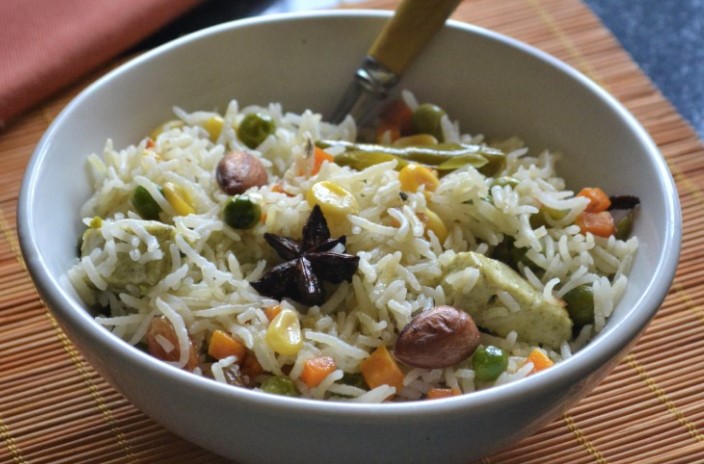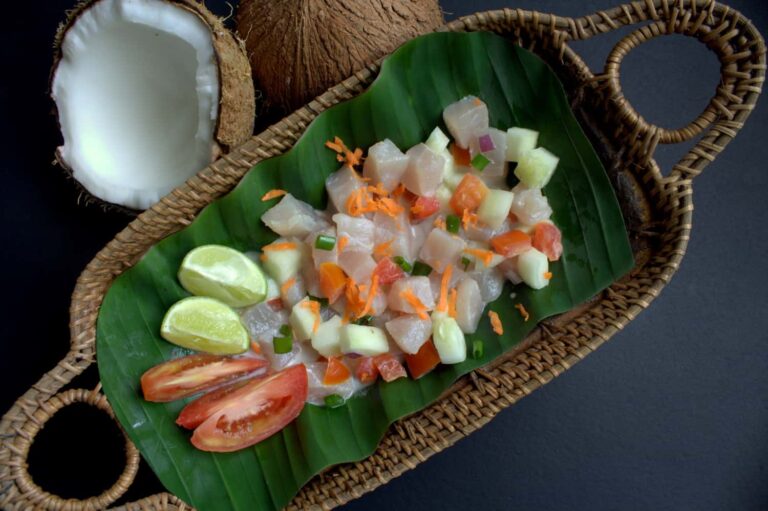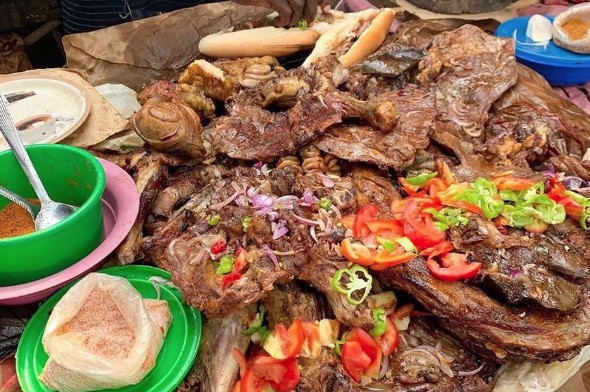Introduction: Palauan cuisine
Palauan cuisine is a fusion of traditional and modern cooking techniques and ingredients. The unique food culture of Palau, an island country in the western Pacific Ocean, is heavily influenced by the surrounding sea and its abundance of seafood. However, the island’s indigenous ingredients and traditional cooking methods are also vital components of Palauan cuisine.
Taro: A staple ingredient in Palauan cuisine
Taro is a root vegetable and a significant ingredient in Palauan cuisine. It is used in a variety of dishes, including soups, stews, and desserts. Taro’s starchy flavor and potato-like texture make it a staple in many Palauan households. Additionally, taro is significant in Palauan culture and is often used in various rituals and celebrations.
Nutritional value of taro
Taro is an excellent source of dietary fiber, potassium, and vitamins B and C. It also contains several minerals such as magnesium, zinc, and phosphorus. Taro is low in fat and calories, making it a healthy addition to any diet.
Coconut: A versatile ingredient in Palauan cuisine
Coconut is another essential ingredient in Palauan cuisine. It is used in a variety of dishes, including soups, stews, curries, and desserts. Coconut milk, water, and flesh are all used in Palauan cooking. The coconut’s sweet, nutty flavor and creamy texture make it a versatile ingredient in many dishes.
Nutritional value of coconut
Coconut is high in healthy fats, fiber, and minerals like potassium, phosphorus, and magnesium. It also contains antioxidants and medium-chain triglycerides, which have been linked to health benefits such as weight loss and improved heart health.
Popular dishes made with taro and coconut in Palauan cuisine
Two popular dishes that use taro and coconut are taro and coconut soup and tama, a dessert made from taro, coconut milk, and sugar. Taro and coconut soup is a hearty, savory soup made with taro, coconut milk, various vegetables, and sometimes meat or seafood. Tama is a sweet, sticky dessert often served during celebrations and ceremonies. It is made by steaming taro, mashing it, and mixing it with coconut milk and sugar.
In conclusion, taro and coconut are essential ingredients in Palauan cuisine. These versatile ingredients are used in a variety of dishes and provide numerous health benefits. Whether you’re enjoying a savory soup or a sweet dessert, the flavors of taro and coconut are sure to delight your taste buds.




